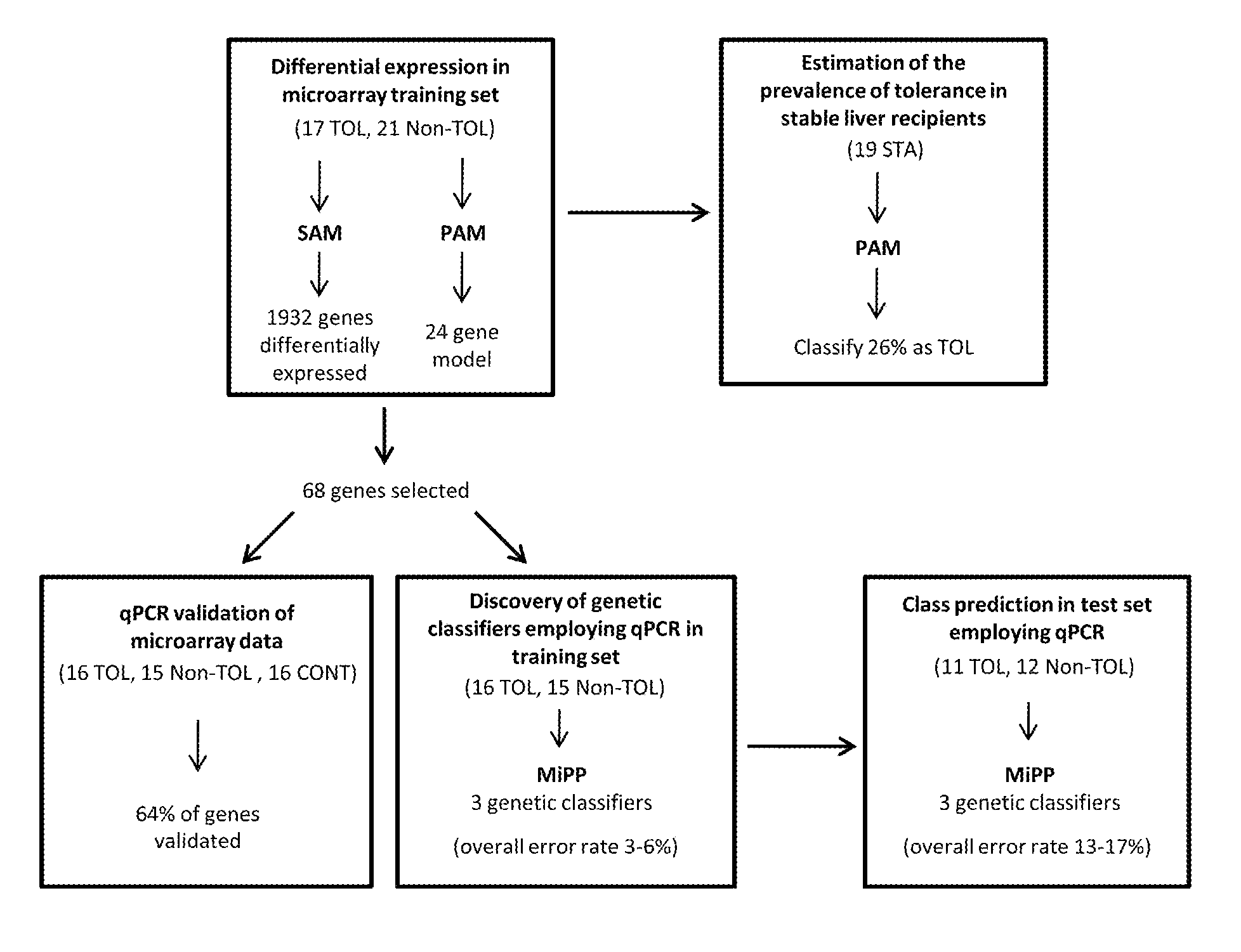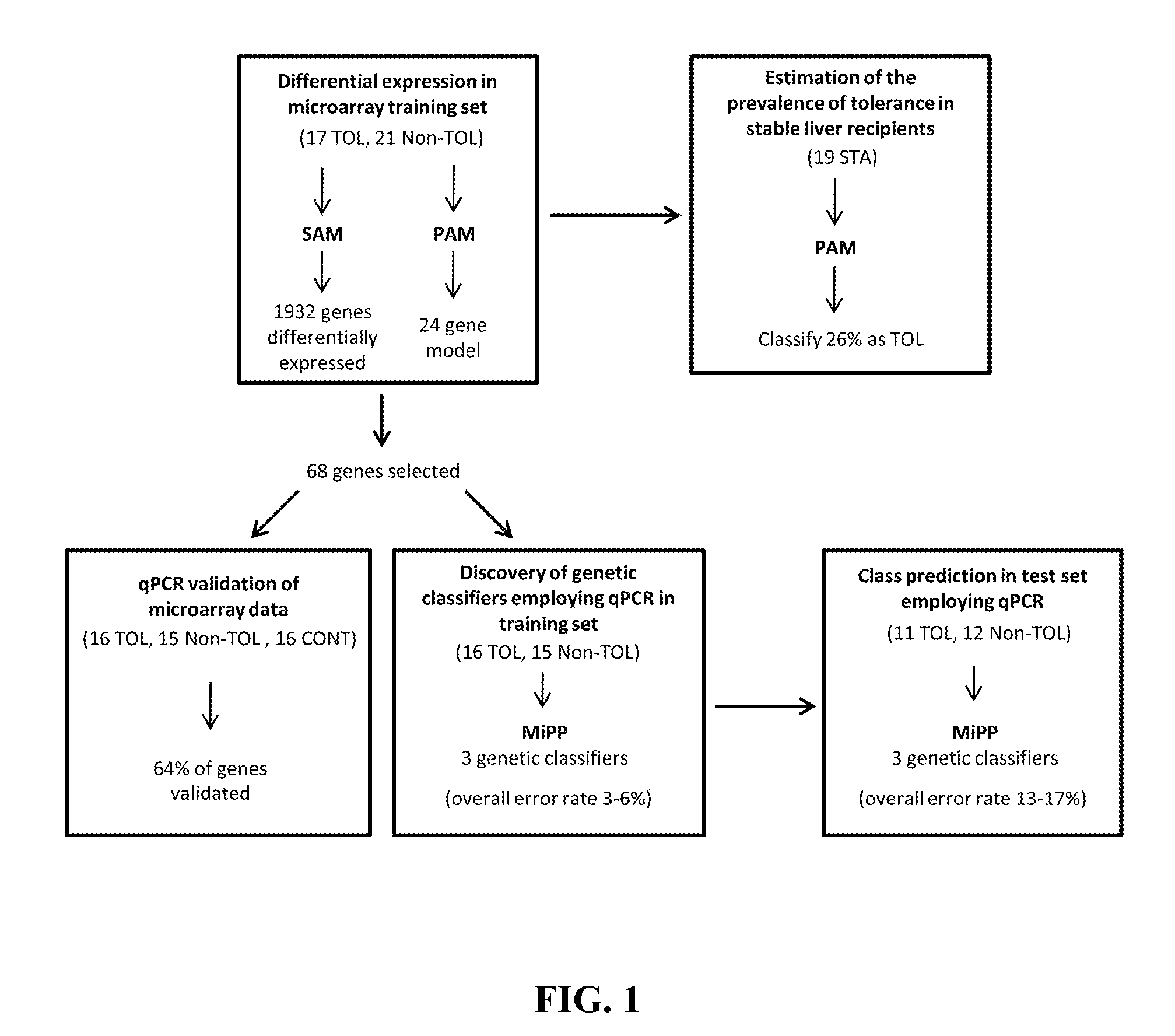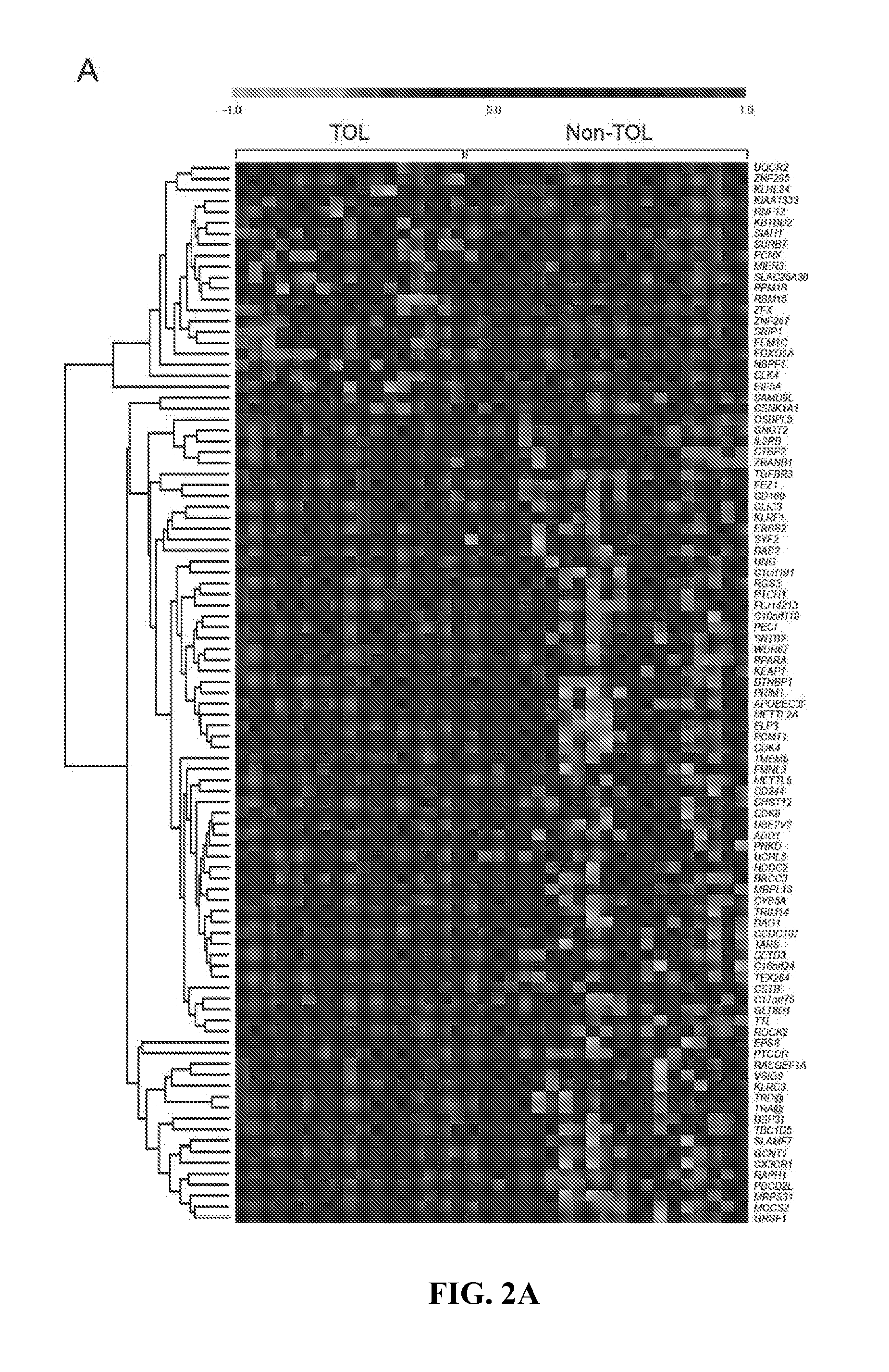In vitro diagnosis/prognosis method and kit for assessment of tolerance in liver transplantation
- Summary
- Abstract
- Description
- Claims
- Application Information
AI Technical Summary
Benefits of technology
Problems solved by technology
Method used
Image
Examples
example 1
Patients
[0076]Peripheral blood samples were collected from a cohort of 28 operationally tolerant liver transplant recipients (TOL) and 33 liver recipients in whom drug weaning was attempted but led to acute rejection requiring reintroduction of immunosuppressive drugs (non-tolerant, Non-TOL). TOL recipients had been intentionally weaned from immunosuppressive therapy under medical supervision. Criteria employed to select patients for immunosuppression weaning in the participating institutions were the following: a) >3 years after transplantation; single drug immunosuppression; b) absence of acute rejection episodes in the previous 12 months; absence of signs of acute / chronic rejection in liver histology; and c) absence of autoimmune liver disease before or after transplantation. In TOL recipients blood was collected >1 year after successful immunosuppressive drug discontinuation, while in Non-TOL recipients specimens were harvested >1 year after complete resolution of the acute reje...
example 2
Microarray Experiments
[0077]Microarray experiments were conducted on PBMCs obtained from 21 Non-TOL, 17 TOL and 19 STA recipients. PBMCs were isolated employing a Ficoll-Hypaque layer (Amersham Biosciences), total RNA was extracted with Tryzol reagent (Life Technologies), and the derived cDNA samples were hybridized onto Affymetrix Human Genome U133 Plus 2.0 arrays containing 54675 probes for 47000 transcripts (Affymetrix). Sample handling and RNA extraction was performed by the same investigator in all cases (M.M-L1).
example 3
[0078]Microarray data from 57 samples (21 Non-TOL, 17 TOL and 19 STA) were normalised using the GC content adjusted-robust multi-array (GC-RMA) algorithm, which computes expression values from probe intensity values incorporating probe sequence information (10). Next we employed a conservative probe-filtering step excluding those probes not reaching a log 2 expression value of 5 in at least 1 sample, which resulted in the selection of a total of 23782 probes out of the original 54675 set. In order to eliminate non-biological experimental variation or batch effects observed across successive batches of microarray experiments we applied ComBat approach, which uses nonparametric empirical Bayes frameworks for data adjustment (11).
PUM
| Property | Measurement | Unit |
|---|---|---|
| Gene expression profile | aaaaa | aaaaa |
| Level | aaaaa | aaaaa |
Abstract
Description
Claims
Application Information
 Login to View More
Login to View More - R&D
- Intellectual Property
- Life Sciences
- Materials
- Tech Scout
- Unparalleled Data Quality
- Higher Quality Content
- 60% Fewer Hallucinations
Browse by: Latest US Patents, China's latest patents, Technical Efficacy Thesaurus, Application Domain, Technology Topic, Popular Technical Reports.
© 2025 PatSnap. All rights reserved.Legal|Privacy policy|Modern Slavery Act Transparency Statement|Sitemap|About US| Contact US: help@patsnap.com



